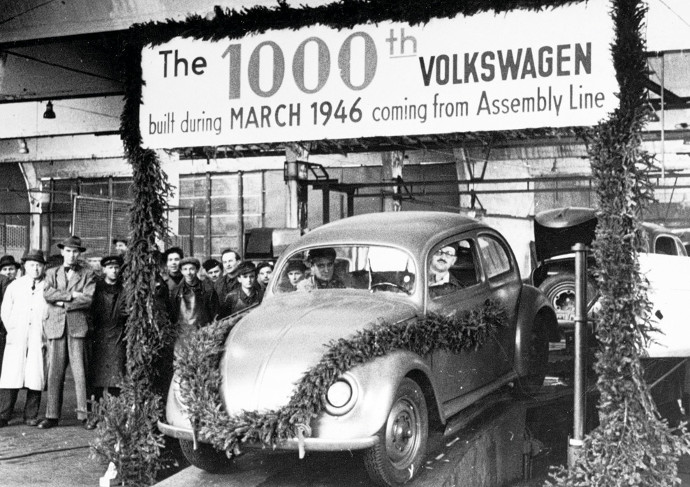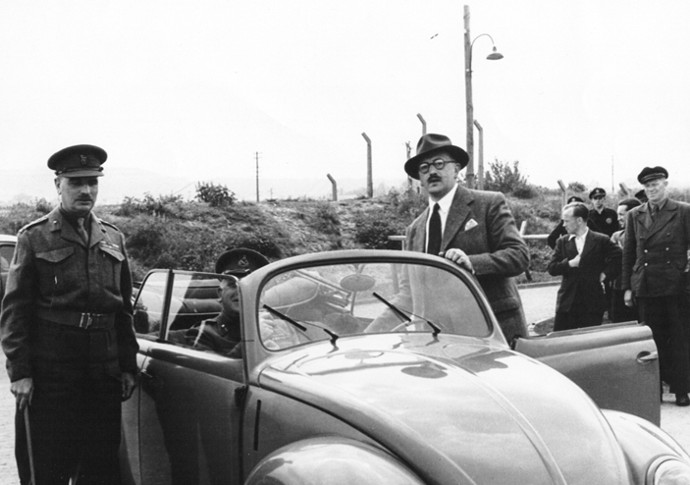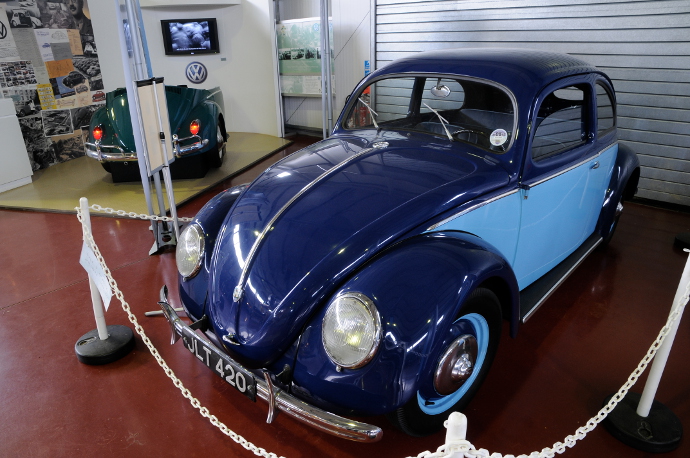Yorkshire born Ivan Hirst was for many the man that saved the Beetle, which in turn allowed Volkswagen to prosper in the immediate post-war period. While British manufacturers dismissed the Bug, Hirst rightly saw its potential and persuaded its resurrection from the Wolfsburg factory ashes. The rest, as they say, is history…
Hirst went to Wolfsburg to sort out the bombed remnants of the Volkswagen factory for the British Army in the summer of 1945. As a Major with the Royal Electrical and Mechanical Engineers (REME), his objective was to dismantle the entire production line and prepare it to be shipped out as reparations, while at the same time running a workshop to repair British army vehicles. Interestingly, the Russians and Americans had got there first but had failed to recognise the site’s potential or, for that matter, twig what gems it was geared up for producing.

Among the debris, some of which had been strategically positioned to disguise the fact that the plant could quickly be made operational again, Hirst miraculously discovered an early Beetle and considered it would make ideal transport for the allies and could even become a commercial success.
As it turned out, none of Britain’s motor manufacturers wanted anything to do with the early prototypes, with an official report famously stating that “the vehicle does not meet the fundamental technical requirement of a motor car,” adding that “it is quite unattractive to the average buyer,” and concluding that “to build the car commercially would be a completely uneconomic enterprise.”

Hirst and his superior, Colonel Charles Radclyffe, disagreed, and having got one of the rare surviving saloons running and painted green, he persuaded the allied management to re-start production. He had originally considered producing the rugged Kübelwagen and employing Germans to maintain them as runabouts, but because the bodies were made in the Russian zone of Berlin and some of the tooling was missing, he went with the saloon instead. By the end of 1945, the factory had managed to produce no less than 20,490 saloons for the occupying forces mainly, including the Americans, British and French. Because supplies were scarce, a barter system was set up whereby complete cars were exchanged for spares, giving rise to the rumour that the British were running a ‘black market’. Needless to say, everything was totally above board!

Recognising expansion would be tricky with just one model, Hirst and Radcylffe looked into the possibility of producing more models and a two-seater convertible and open topped four-seater model was made, the former – being known as the Radclyffe roadster – later became the template for Hebmüller, while Karmann later got involved with production of the four-seater.
Hirst went on to set up a sales and service network, as well arranging for the first vehicles to be exported. The first Beetle, as it became known, went to Holland in 1947.
Having handed over the Volkswagen factory to a new trust, run by the new West German federal government and the state of Lower Saxony, Hirst left Wolfsburg in 1949 and was demobbed two years later.

So grateful were the management at Volkswagen, that they wanted to present Hirst with a car. Alas, he didn’t accept but instead was presented with an 18in scale model made by Koch in Cologne. Just three were made; one went to Hirst, another to Colonel Radclyffe and the third to the first VW MD, Heinz Nordhoff, and given the amount of detail that went in to it, some say they cost more to produce than a full scale car! Hirst died in 2000 at the age of 84.

The bright blue Beetle here is one of the very first examples imported to the UK and belongs to the Colborne-Baber family who opened one of the very first VW dealerships at Ripley in Surrey. In recognition of Hirst’s army background, until recently it was displayed at the REME museum in Aborfield which is currently shut in readiness for a move to Wiltshire. As an interesting postcript, when the first batch of cars arrived at Harwich, there was still a large amount of prejudice against German products and around 75% of the vehicles that arrived were damaged by vandalism.
Ian
The opinions expressed here are the personal opinions of the author and do not necessarily represent the views and opinions of VW Heritage.


Currently shocked, I have just purchased a mk2 GTI and Major Hirst was the first owner.
Obtained by Major Hirst directly from VW, I can see why.
Feeling honoured.
My dad,,Clifford E Sawyer,,,was part of the rebuilding of V W,,,he stayed in Germany after the war to work with the Major on the project,,,my dad passed in 2008,,,but the told me of the 3 years in Germany after the war,, and his work on and with the car,,,,his first task was to go all over Germany and find scrap metal ,,tanks,,,ships,,,plains,,etc,,, cut them up for shipment,send back the chunks to be recycled into steel,then turned into the raw shape for the car,,,,,then he over saw the production of the car,then he helped set up the sales,service,and the P R needed to sell the car,,then he was involved in the secondary parts ( sub suppliers ),to keep every thing running…..after he returned to the U K in 1950,,V W gave him a special award for all his service,,,,he did not talk about the war,but he was proud of his work in getting Germany back on track,and prouder still of his part in V W…..
My grandfather, Lawrence W Bolton, was a metallurgist, employed by the British Cast Iron Research Association based in Bordesley Hall, Alvechurch. During the War he also worked with John Gardom Foundry Consultants employed by the Ministry of Supply on various cast iron projects. I am told he went to advise on the re-establishment of Volkswagen after the War. It would not have been a long visit as by 1947 he was setting up and managing Morris Motors in Wellingborough.